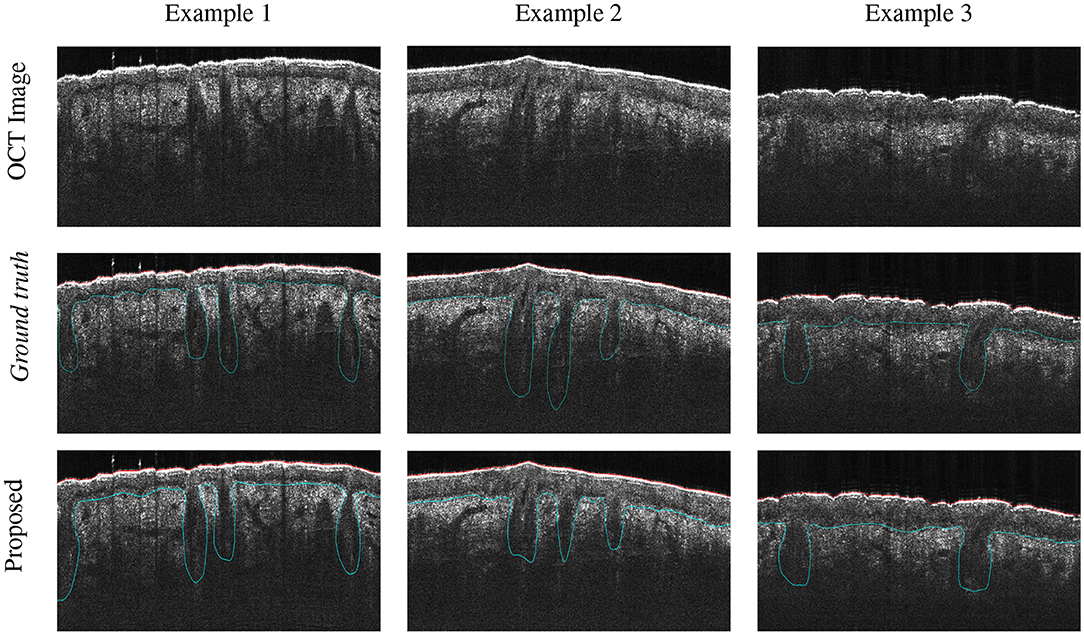Surface skin pain. Complex Regional Pain Syndrome (CRPS): Understanding Symptoms, Causes, and Treatments
What is Complex Regional Pain Syndrome. How does CRPS affect the body. What are the main symptoms of CRPS. How is CRPS diagnosed and treated. Can CRPS be prevented or cured. What lifestyle changes can help manage CRPS. How does CRPS impact quality of life.
Understanding Complex Regional Pain Syndrome (CRPS)
Complex Regional Pain Syndrome (CRPS), formerly known as reflex sympathetic dystrophy syndrome (RSDS), is a challenging condition characterized by intense pain, often disproportionate to the initial injury. CRPS typically affects extremities such as arms, legs, hands, or feet, but can impact any part of the body. The condition usually develops after a soft tissue injury, fracture, or surgery, with symptoms manifesting within four to six weeks post-incident.
CRPS is believed to stem from dysfunction in the central or peripheral nervous systems, resulting in an overreaction to pain signals that the nervous system struggles to regulate. This complex interplay of factors makes CRPS a difficult condition to diagnose and treat effectively.
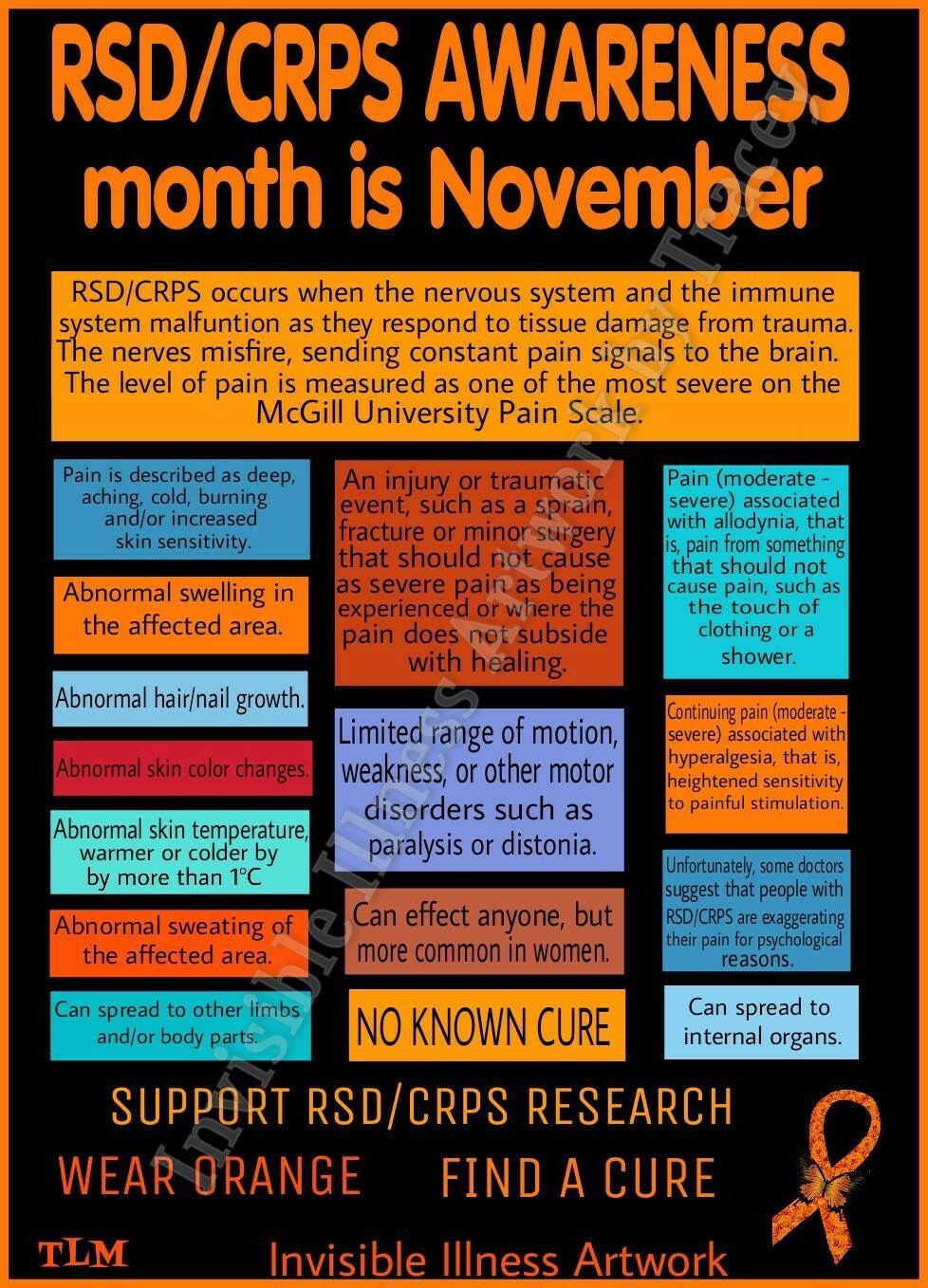
The Intricate Causes of CRPS
The exact cause of CRPS remains elusive, but researchers believe it may result from a combination of factors. These include:
- General inflammation
- Inflammation of nerves
- Changes in pain perception within the central nervous system
- Dysfunction in nerve messaging at the injury site
- Potential autoimmune and genetic factors
Scientists have identified specific inflammatory markers in the affected tissue, blood, and spinal fluid of CRPS patients. Additionally, evidence suggests the release of pain- and inflammation-producing compounds in nerves around the affected area, contributing to an oversensitivity to pain sensations.
Recognizing CRPS Symptoms
CRPS presents with a range of symptoms that can vary in severity and duration among individuals. The primary and most debilitating symptom is typically pain. Key signs and symptoms include:
- Continuous, worsening pain
- Pain disproportionate to the initial injury
- Extreme sensitivity to touch
- Spreading pain
- Burning sensation or feeling of limb compression
- Skin swelling
- Decreased range of motion and function
- Changes in skin temperature, color, and texture
- Alterations in nail and hair growth
Do these symptoms always occur simultaneously? While not all symptoms may be present in every case, a combination of these signs is typically observed in CRPS patients.

Diagnosing CRPS: A Complex Process
Diagnosing CRPS can be challenging due to the lack of a specific diagnostic test. Healthcare providers rely on a comprehensive approach, including:
- Careful history taking
- Physical examination
- Review of symptoms
- Exclusion of other potential causes
The Budapest criteria, a standardized diagnostic tool, is often used to confirm CRPS. This criteria requires the presence of a specific number of symptoms described in the condition’s profile.
Are there any imaging tests that can help diagnose CRPS? While not definitive, certain imaging techniques such as bone scans, X-rays, MRI, and thermography can support the diagnosis by revealing changes in bone density, tissue, or temperature differences in the affected area.
Treatment Approaches for CRPS
Managing CRPS often requires a multidisciplinary approach, combining various treatments to address different aspects of the condition. Common treatment modalities include:
- Medications (pain relievers, anti-inflammatories, antidepressants, anticonvulsants)
- Physical therapy and occupational therapy
- Psychological support and cognitive-behavioral therapy
- Sympathetic nerve blocks
- Spinal cord stimulation
- Intrathecal drug pumps
- Biofeedback and relaxation techniques
How effective are these treatments? The efficacy of treatments can vary among individuals, and a combination of approaches is often necessary to achieve optimal symptom management.
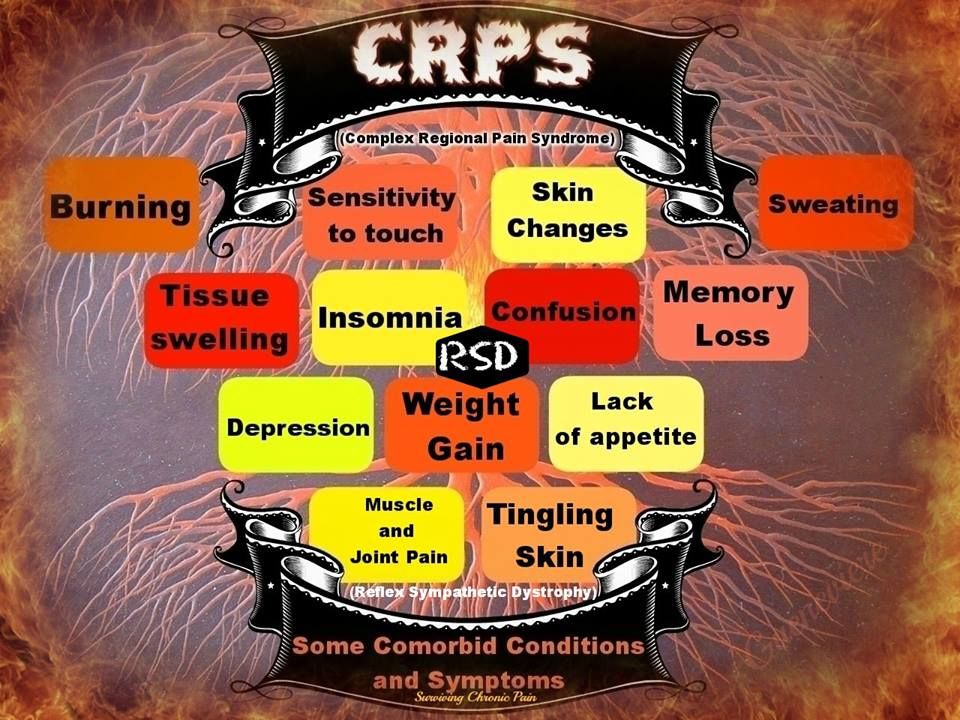
Living with CRPS: Lifestyle Modifications and Coping Strategies
Adapting to life with CRPS often requires significant lifestyle changes and the development of effective coping strategies. Some helpful approaches include:
- Stress management techniques
- Regular, gentle exercise within pain limits
- Maintaining a healthy diet
- Adequate sleep and rest
- Joining support groups
- Practicing mindfulness and meditation
Can lifestyle changes alone manage CRPS? While lifestyle modifications are crucial in managing CRPS, they are most effective when combined with medical treatments and therapies prescribed by healthcare professionals.
The Impact of CRPS on Quality of Life
CRPS can significantly affect an individual’s quality of life, impacting various aspects such as:
- Physical functionality and mobility
- Emotional well-being
- Social relationships
- Work and career prospects
- Financial stability
Understanding these impacts is crucial for patients, caregivers, and healthcare providers to develop comprehensive management strategies that address both the physical and psychosocial aspects of living with CRPS.
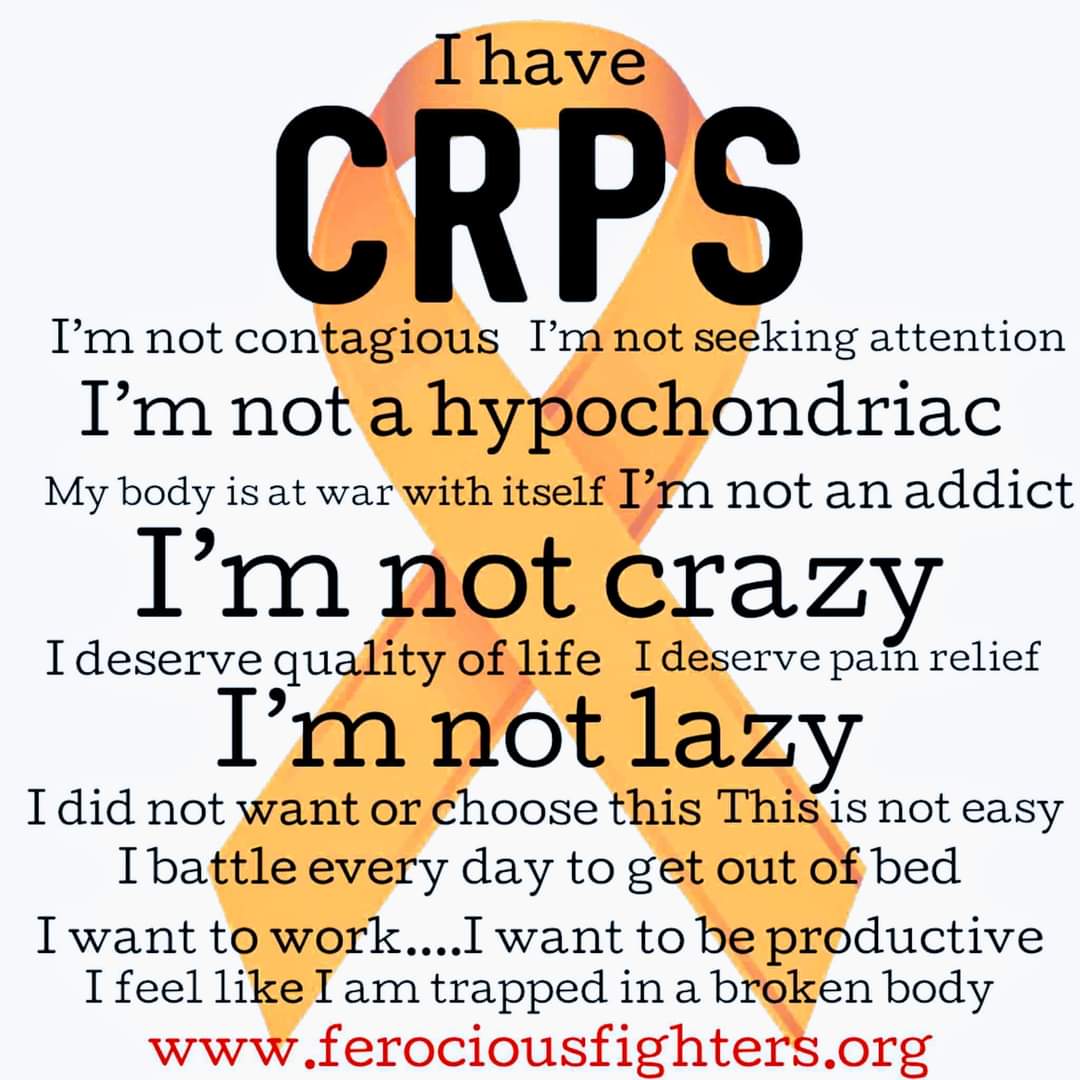
Research and Future Directions in CRPS Management
Ongoing research into CRPS aims to improve understanding of the condition and develop more effective treatments. Current areas of focus include:
- Genetic factors contributing to CRPS susceptibility
- Advanced imaging techniques for earlier diagnosis
- Novel drug therapies targeting specific pain pathways
- Neuromodulation techniques
- Personalized treatment approaches based on individual patient profiles
What advancements can we expect in CRPS treatment? While it’s difficult to predict specific breakthroughs, the ongoing research offers hope for improved diagnostic tools and more targeted, effective treatments in the future.
The Role of Early Intervention in CRPS Management
Early diagnosis and treatment of CRPS can significantly impact the course of the condition. Prompt intervention may help:
- Prevent the progression of symptoms
- Reduce the risk of long-term complications
- Improve overall outcomes and quality of life
Healthcare providers emphasize the importance of seeking medical attention promptly if CRPS is suspected, particularly following an injury or surgery.
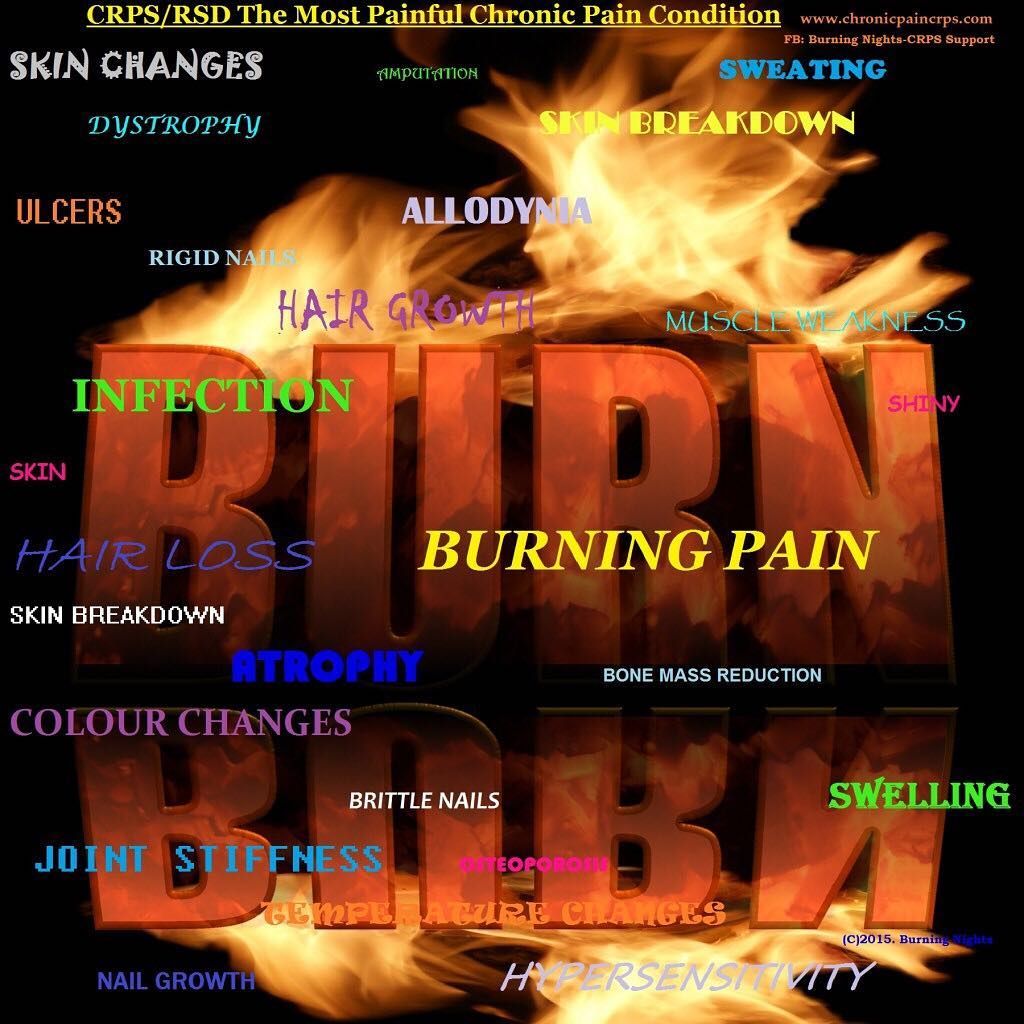
CRPS in Special Populations
While CRPS can affect individuals of all ages, certain populations may require special consideration:
CRPS in Children
CRPS can occur in children, although it’s less common than in adults. Pediatric cases may present unique challenges in diagnosis and treatment, requiring specialized approaches tailored to younger patients.
CRPS in the Elderly
Older adults with CRPS may face additional complications due to age-related health issues and potential interactions with other medications. Treatment plans for elderly patients often need careful adjustment to account for these factors.
The Psychological Impact of CRPS
Living with chronic pain can take a significant toll on mental health. Many CRPS patients experience:
- Depression
- Anxiety
- Sleep disturbances
- Feelings of isolation
Addressing these psychological aspects is crucial for comprehensive CRPS management. Cognitive-behavioral therapy, support groups, and in some cases, psychiatric medications may be recommended as part of the treatment plan.
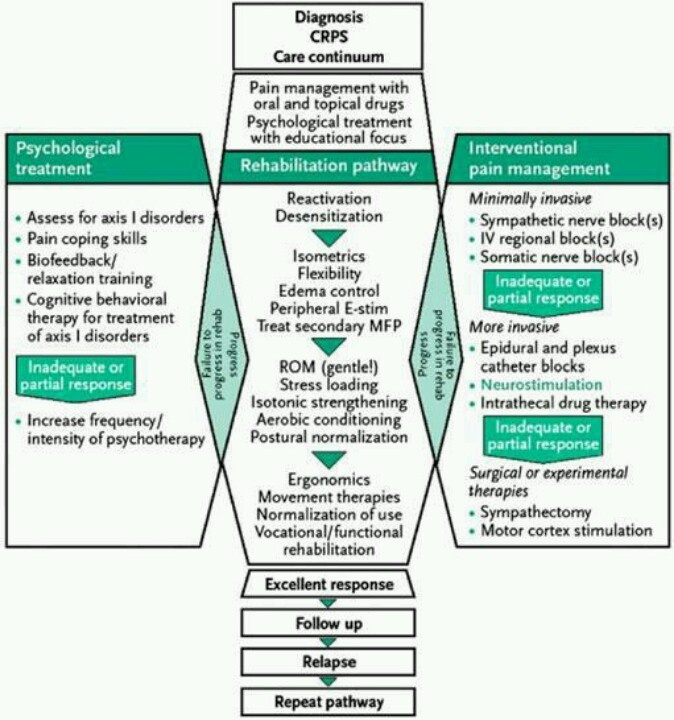
The Economic Burden of CRPS
CRPS can have substantial economic implications for both individuals and healthcare systems. Costs associated with CRPS may include:
- Direct medical expenses for treatments and therapies
- Lost productivity due to disability or reduced work capacity
- Long-term care costs
Understanding these economic factors is important for developing policies and support systems to assist CRPS patients and their families.
The Role of Interdisciplinary Care in CRPS Management
Effective CRPS management often requires a team approach, involving various healthcare professionals such as:
- Pain specialists
- Neurologists
- Physical therapists
- Occupational therapists
- Psychologists or psychiatrists
- Nutritionists
This interdisciplinary approach allows for comprehensive care addressing all aspects of the condition.
CRPS and Complementary Therapies
While conventional medical treatments form the cornerstone of CRPS management, some patients find additional relief through complementary therapies such as:
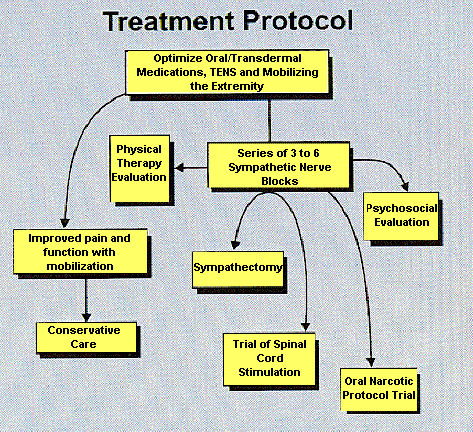
- Acupuncture
- Massage therapy
- Tai Chi or Qigong
- Herbal supplements
It’s important to note that while these therapies may provide symptomatic relief for some individuals, they should be used in conjunction with, not as a replacement for, conventional medical treatments. Patients should always consult their healthcare providers before incorporating complementary therapies into their treatment plan.
The Importance of Patient Education in CRPS Management
Educating patients about CRPS is crucial for effective management of the condition. Informed patients are better equipped to:
- Recognize early signs and symptoms
- Adhere to treatment plans
- Implement self-management strategies
- Communicate effectively with healthcare providers
Healthcare providers play a vital role in ensuring patients and their families have a clear understanding of CRPS, its potential impacts, and available treatment options.
CRPS and Disability Claims
The debilitating nature of CRPS can sometimes lead to long-term disability. Navigating disability claims can be challenging for CRPS patients due to the complex and often misunderstood nature of the condition. Key considerations include:
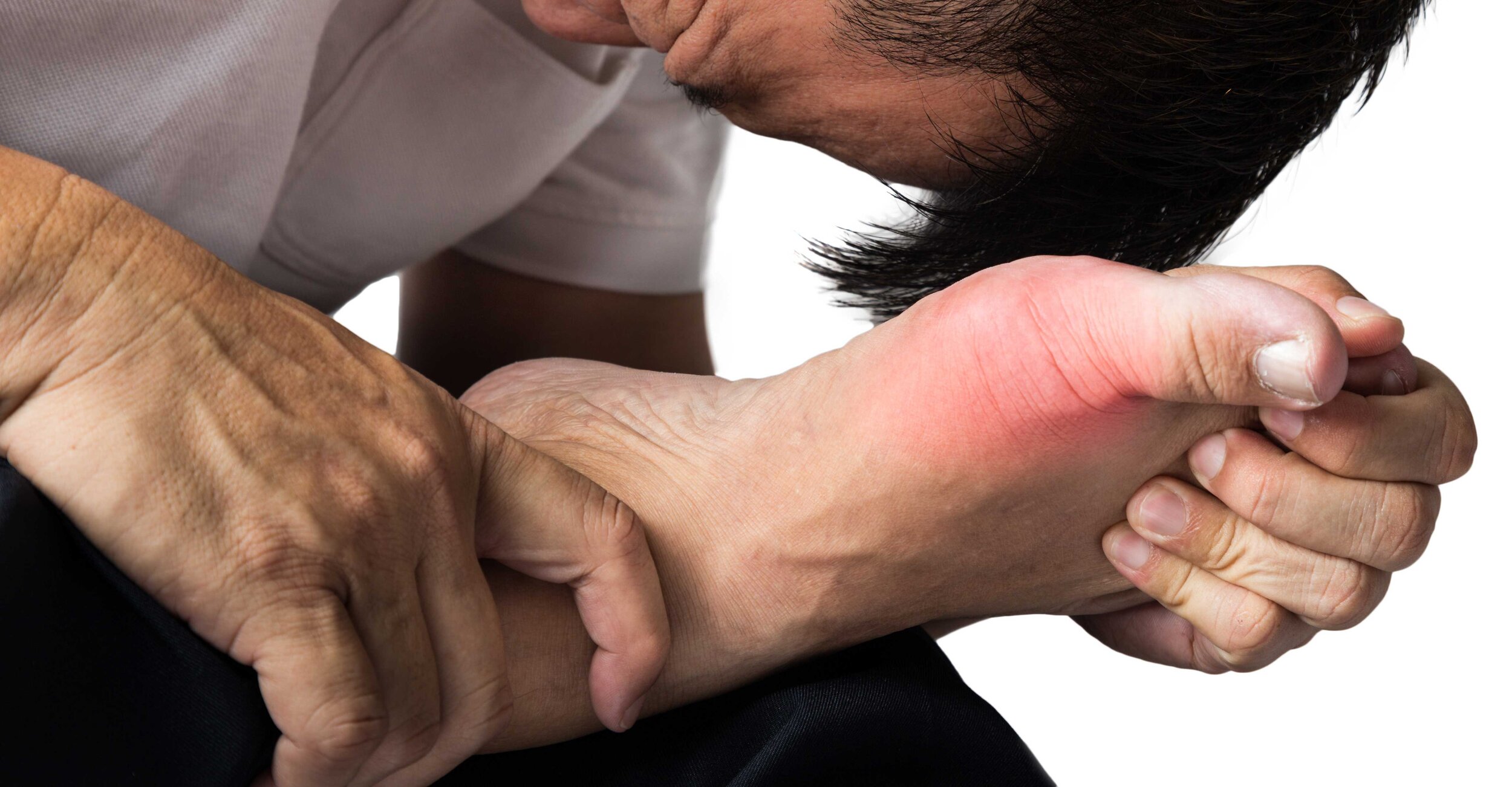
- Documenting symptoms and their impact on daily life
- Gathering comprehensive medical records
- Understanding the criteria for disability related to chronic pain conditions
- Seeking assistance from legal professionals experienced in disability claims
Patients should be aware of their rights and the resources available to support them through the disability claim process.
CRPS and Pain Management Techniques
Beyond pharmacological interventions, various pain management techniques can be beneficial for CRPS patients:
- Graded motor imagery
- Mirror therapy
- Desensitization techniques
- Virtual reality therapy
- Transcutaneous electrical nerve stimulation (TENS)
These techniques aim to retrain the brain’s perception of pain and improve function in the affected limb. The effectiveness of these methods can vary among individuals, and they are typically used as part of a comprehensive treatment plan.
The Role of Nutrition in CRPS Management
While diet alone cannot cure CRPS, proper nutrition can play a supportive role in managing the condition. Some dietary considerations for CRPS patients include:
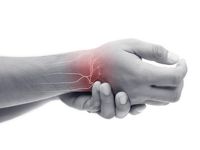
- Anti-inflammatory foods to help reduce overall inflammation
- Adequate hydration to support overall health and potentially reduce swelling
- Balanced intake of vitamins and minerals, particularly those that support nerve health
- Avoiding trigger foods that may exacerbate symptoms
Consulting with a nutritionist or dietitian can help develop a personalized eating plan that supports overall health and potentially aids in symptom management.
CRPS and Exercise: Finding the Right Balance
Exercise can be challenging for CRPS patients due to pain and mobility issues. However, maintaining some level of physical activity is crucial for overall health and can potentially aid in managing symptoms. Key considerations include:
- Starting with gentle, low-impact exercises
- Gradually increasing activity levels as tolerated
- Focusing on maintaining range of motion in affected limbs
- Incorporating relaxation techniques into exercise routines
- Working closely with physical therapists to develop safe, effective exercise plans
The goal is to find a balance between staying active and avoiding exacerbation of symptoms.

CRPS and Sleep: Managing the Vicious Cycle
Sleep disturbances are common among CRPS patients, often due to pain and other symptoms. Poor sleep can, in turn, exacerbate pain, creating a challenging cycle. Strategies to improve sleep quality may include:
- Establishing a consistent sleep schedule
- Creating a comfortable sleep environment
- Practicing relaxation techniques before bedtime
- Avoiding stimulants like caffeine close to bedtime
- Discussing sleep aids with healthcare providers if necessary
Addressing sleep issues can significantly impact overall well-being and pain management for CRPS patients.
The Future of CRPS Research and Treatment
As understanding of CRPS continues to evolve, several promising areas of research may shape future treatment approaches:
- Targeted immunotherapies to address potential autoimmune components of CRPS
- Advanced neuroimaging techniques to better understand brain changes in CRPS
- Gene therapy approaches to modulate pain pathways
- Development of more specific diagnostic markers for earlier detection
- Refinement of existing treatments, such as more precise neuromodulation techniques
While these areas of research offer hope for improved CRPS management in the future, it’s important for patients to work closely with their healthcare providers to optimize current available treatments and maintain the best possible quality of life.
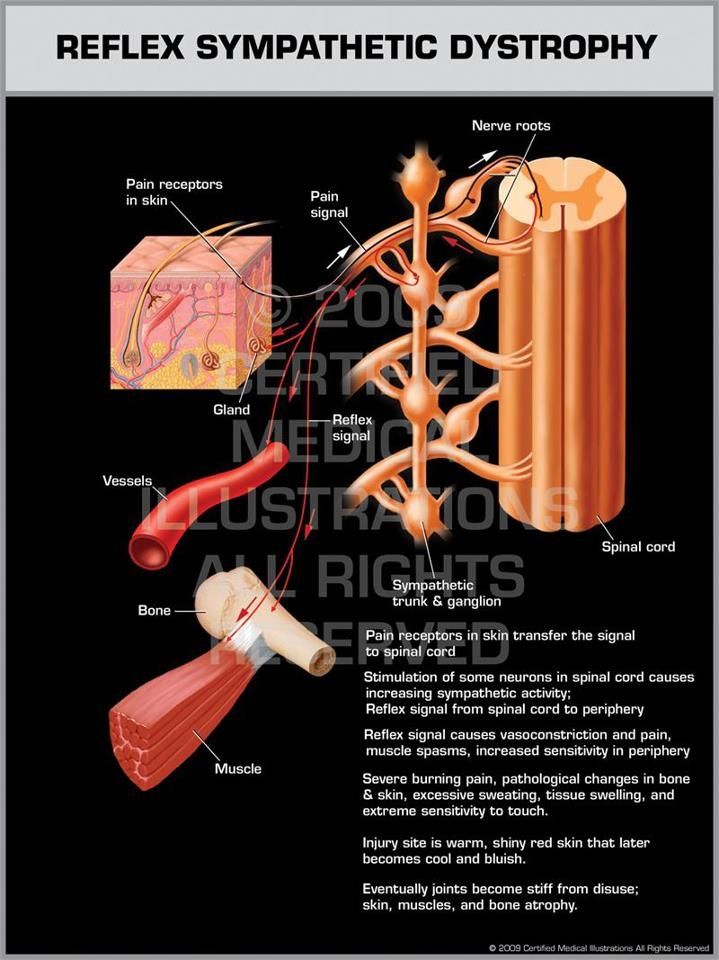
Complex Regional Pain Syndrome (CRPS): Symptoms & Treatments
Overview
What is complex regional pain syndrome (CRPS)?
Complex regional pain syndrome (CRPS), formerly known as reflex sympathetic dystrophy syndrome (RSDS), is a condition that causes pain; swelling; changes in skin color, texture and temperature and other symptoms. It usually affects your extremities – an arm, leg, hand or foot – but can affect any part of your body.
Most cases of CRPS start after a soft tissue injury (such as a sprain), fracture or surgery. The pain can be intense and is much more than what would be expected during recovery from an injury, fracture or surgery.
Experts believe that CRPS occurs as a result of dysfunction in the central or peripheral nervous systems. Your central nervous system consists of your brain and spinal cord. Your peripheral nervous system relays information from your brain and spinal cord to your organs, arms, legs, fingers, and toes. The abnormal functioning results in an overreaction to pain signals that the nervous system can’t shut off.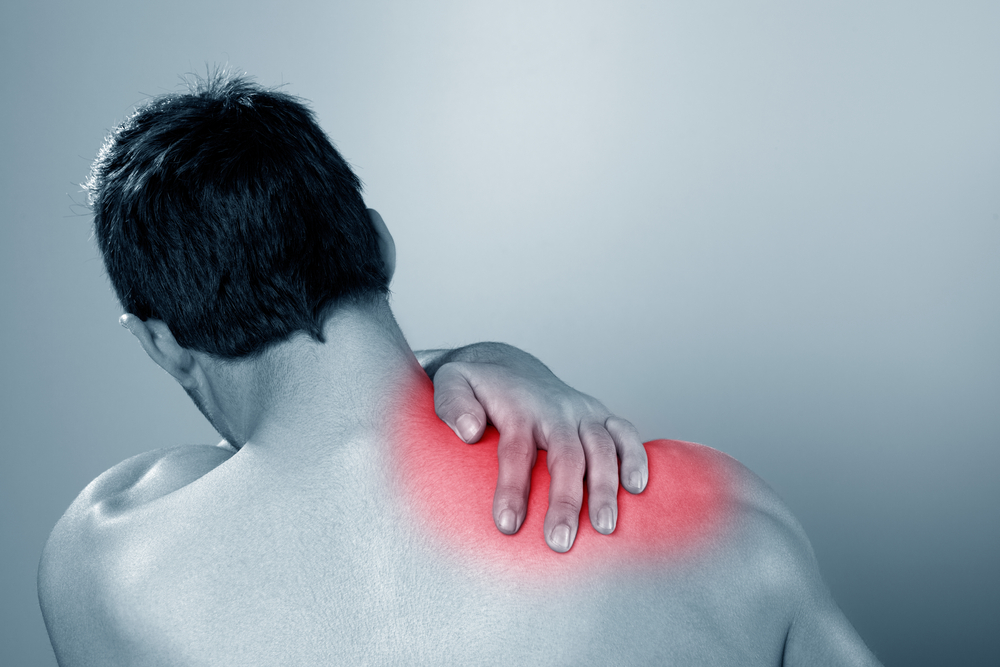
CRPS is not widely known by many doctors and is not well understood, so it’s often misdiagnosed. Many patients receive the wrong treatments or no treatment at all.
Who gets complex regional pain syndrome (CRPS)?
Complex regional pain syndrome (CRPS) appears to peak around age 40. The syndrome also can occur in children. It affects women more often than men.
Symptoms and Causes
What causes complex regional pain syndrome (CRPS)?
How CRPS is caused is not totally understood. Scientists think it might be a combination of factors that produce similar symptoms. They think CRPS is the result of general inflammation, inflammation of the nerves and perhaps even changes in a person’s perception of pain in the brain and spinal cord (the central nervous system).
Researchers have found certain signs of inflammation – certain substances and chemicals – in the affected tissue, blood and spinal fluid of patients with CRPS. They have also found evidence of the release of certain pain- and inflammation-producing compounds in nerves in the affected area.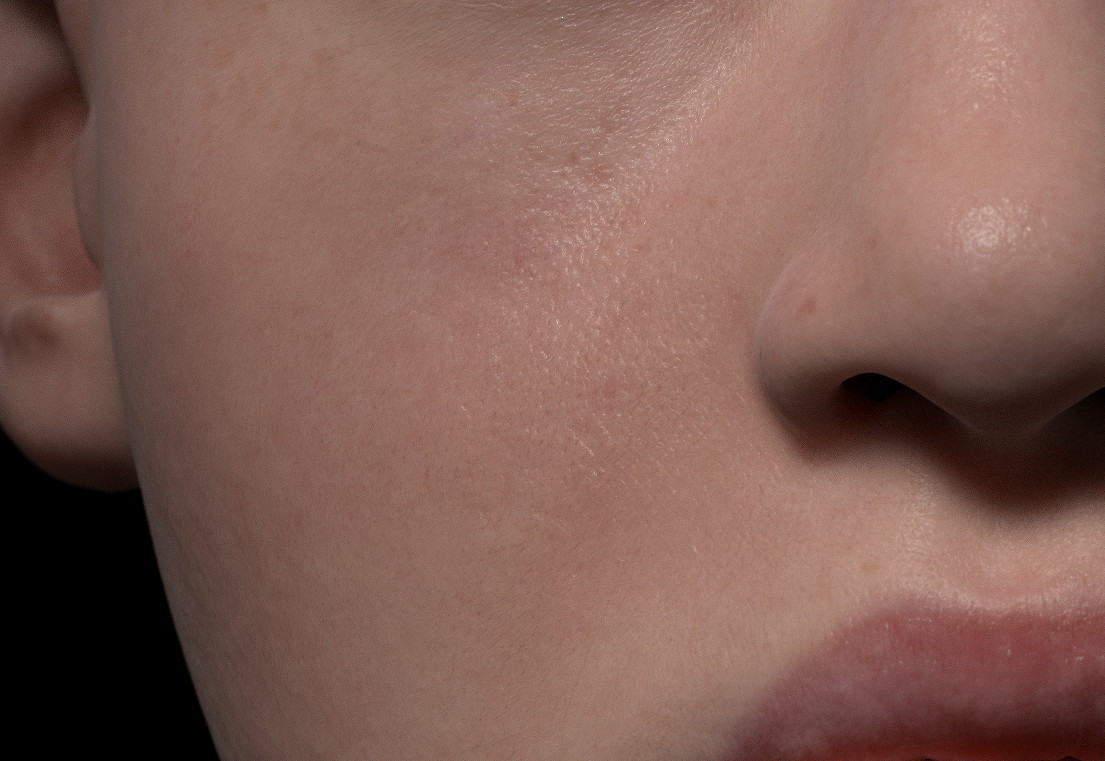 There may also be dysfunction in the messaging between nerves at the site of injury. There are also signs of other substances and chemicals being released at the affected site, which results in an overreaction or oversensitivity to the sensation of pain in response to the injury. Autoimmune and genetic causes may also play a role in the development of CRPS. Researchers continue to look for and further understand causes of this condition.
There may also be dysfunction in the messaging between nerves at the site of injury. There are also signs of other substances and chemicals being released at the affected site, which results in an overreaction or oversensitivity to the sensation of pain in response to the injury. Autoimmune and genetic causes may also play a role in the development of CRPS. Researchers continue to look for and further understand causes of this condition.
What are the symptoms of complex regional pain syndrome (CRPS)?
How severe and how long symptoms of complex regional pain syndrome (CRPS) lasts varies from person to person. Pain is usually the leading and most disabling symptom.
Signs and symptoms of CRPS include:
- Continuous pain that gets worse over time.
- Pain that is out of proportion to the severity of your injury.
- Extreme sensitivity to pain such that a very light touch to your skin produces severe pain.
- Pain that spreads. (For example, pain from an injury to a finger or toe spreads to your entire arm or leg.
 Also, pain that travels to the opposite extremity.)
Also, pain that travels to the opposite extremity.) - “Burning” pain or a feeling that the affected limb is being squeezed.
- Skin swelling. Swelling in your affected limb that may come and go or remain constant.
- Decreased range of motion/loss of function, tremor. Decreased ability to move your affected limb and/or increased stiffness. Difficulty placing pressure on your affected limb or joint.
- Changes in skin temperature. The skin on your affected extremity feels warmer or cooler compared to the opposite extremity.
- Changes in skin color, appearing as blotchy, pale, purple/bruised or red.
- Changes in skin texture, becoming shiny and thin or excessively sweaty.
- Changes in nail and hair growth. There may be rapid hair growth or no hair growth.
Symptoms of CRPS typically start within four to six weeks after the injury, fracture or surgery.
Diagnosis and Tests
How is complex regional pain syndrome (CRPS) diagnosed?
There is no specific test to diagnose complex regional pain syndrome (CRPS). CRPS is diagnosed mainly through careful history, physical examination and review of your symptoms. Your healthcare provider will ask you if you’d had a recent injury (such as a sprain), fracture or surgery.
CRPS is diagnosed mainly through careful history, physical examination and review of your symptoms. Your healthcare provider will ask you if you’d had a recent injury (such as a sprain), fracture or surgery.
They will look for:
- A change in the appearance, temperature, and texture of your skin in the affected area.
- A higher-than-expected amount of pain from an injury.
- Any other disease or conditions that could cause your pain, changes in your skin or other symptoms.
A specific number of the symptoms described in this article must be present to confirm a diagnosis of CRPS. This diagnostic criteria is called the Budapest criteria (see reference section at end of article for a link to learn more ).
Other tests: Other tests may be ordered to rule out other conditions that cause similar symptoms. For example, an electromyography (EMG) may reveal other causes of neuropathy, which may result in some similar pain scenarios.
Management and Treatment
How is complex regional pain syndrome (CRPS) treated?
There is no cure for complex regional pain syndrome (CRPS). The goal of treatment is to decrease your pain and other symptoms, restore function to the affected limb, and maintain the quality of your life.
It’s important to start treatment early in the course of CRPS. This is because CRPS can cause the affected limb to stiffen over time, the pain usually worsens without treatment, and movement becomes more and more difficult.
Treatment of CRPS requires a combination of approaches carefully managed by physicians and therapists who are experienced in this complex condition.
Treatment methods include:
Physical therapy and occupational therapy: A physical therapist can help improve blood flow to your affected limb as well as increase your flexibility, strength, muscle tone and function. An occupational therapist can teach you new ways to accomplish everyday tasks.
Mirror therapy: This treatment technique uses a mirror to trick your brain into perceiving movement in the affected limb without pain. Looking at the reflection of movement of your unaffected limb in a mirror fools your brain into thinking you are moving two normal limbs.
Desensitization: This technique involves touching the affected area with materials of different textures and weights and even placing the affected limb into water of warmer and cooler temperatures. By exposing the affected area/limb to different sensations slowly over time, your brain adjusts to the sensations and pain begins to lessen.
Psychotherapy: Having CRPS increases anxiety, depression and stress, which can increase pain. Psychotherapy (“talk therapy”) involves learning ways to better cope with these and other factors that contribute to your pain and disability.
Medications: No medications are specifically approved for CRPS in the U. S. However, many drugs from different drug classes can be tried. Topical analgesic creams and patches (such as lidocaine) might help relieve pain. Other anesthetic medications and/or medications that have pain-reducing effects include ketamine, dextromethorphan, opioids, some antidepressants (such as amitriptyline and duloxetine [Cymbalta®]), anti-seizure drugs (such as gabapentin [Neurontin], pregabalin [Lyrica®], topiramate [Topamax®]), nonsteroidal anti-inflammatory drugs (such as aspirin, ibuprofen [Advil®, Motrin®], naproxen), bisphosphonates (such as alendronate [Fosamax®]) and botulinum toxin injections.
S. However, many drugs from different drug classes can be tried. Topical analgesic creams and patches (such as lidocaine) might help relieve pain. Other anesthetic medications and/or medications that have pain-reducing effects include ketamine, dextromethorphan, opioids, some antidepressants (such as amitriptyline and duloxetine [Cymbalta®]), anti-seizure drugs (such as gabapentin [Neurontin], pregabalin [Lyrica®], topiramate [Topamax®]), nonsteroidal anti-inflammatory drugs (such as aspirin, ibuprofen [Advil®, Motrin®], naproxen), bisphosphonates (such as alendronate [Fosamax®]) and botulinum toxin injections.
Choice of medication(s) to begin with varies from patient to patient. Your healthcare provider will consider such factors as your age, other existing health conditions, any current medications you are taking, and the potential for medication side effects or interactions with the current medications you are taking.
Alternative therapies for reducing pain: Among these methods are cognitive behavioral therapy, biofeedback and other relaxation techniques, acupuncture, hypnosis, reiki, and chiropractics.
If your CRPS has not responded well to the medications mentioned above or you have severe pain or ongoing CRPS, the following more invasive treatments can be tried:
- Sympathetic nerve blocks: These blocks can provide significant pain relief for some people. One kind of block involves injecting an anesthetic next to the spine to directly block/interrupt the pain signal.
- Intrathecal drug pumps: This treatment involves using an implanted catheter to send pain-relieving drugs, such as ziconotide (Prialt®), right into the spinal fluid.
- Spinal cord stimulation: This treatment involves surgically implanting a pulse generator device under your skin in your abdomen or buttock and electrodes near your spinal cord. The device, which is similar to a pacemaker, sends low level electrical current to the spinal cord. Electrical pulses stimulate the nerves where your pain is felt. These pulses interfere with the pain signal being sent to the brain.
 This treatment is usually considered only if you are in severe pain and all other treatment methods have failed to reduce your pain.
This treatment is usually considered only if you are in severe pain and all other treatment methods have failed to reduce your pain. - Dorsal root ganglia stimulation: This treatment is similar to spinal cord stimulation except that the electrodes are implanted on the dorsal root ganglion, which is a cluster of neurons in the root of the spinal cord. The stimulation is a more targeted therapy that concentrates stimulation where doctors think the pain originates. Again, like spinal cord stimulation, it is usually considered only if you are in severe pain and all other treatment methods have failed to reduce your pain.
Again, choice of treatment, length of treatment, how soon to try these more invasive treatments will vary from patient to patient. Discuss these options with your healthcare provider and ask if any are appropriate for you (if needed).
Outlook / Prognosis
What outcome can I expect if I have been diagnosed with complex regional pain syndrome (CRPS)?
Each person’s experience with CRPS is different. Symptoms in some people go away (remission), remain the same or lessen. In others, CRPS will get worse and even spread to other areas of the body. Each person’s outcome is difficult to predict.
Symptoms in some people go away (remission), remain the same or lessen. In others, CRPS will get worse and even spread to other areas of the body. Each person’s outcome is difficult to predict.
The most important goals are to relieve pain and restore movement and strength in the affected limb. By achieving pain relief, you increase the odds of improving function and quality of life. Carefully selected medications allow some patients with CRPS to successfully manage their pain and lead active lives. Other patients require additional interventions, such as nerve blocks or spinal cord stimulators to relieve pain.
The promising news is that there are many treatment options and many combinations of options that can be tried.
Because of the complexity of this condition and the fact that it is often misdiagnosed, seek out – or ask your healthcare provider to refer you to – a pain management specialist or a specialty pain center with knowledge of CRPS if:
- You think you have symptoms of CRPS.

- You believe your symptoms are getting worse.
- Your condition has not responded to other treatment methods.
The earlier CRPS is diagnosed and treatment is started, the better the chance that your symptoms will not worsen and that your symptoms will respond to treatment.
Living With
Can complex regional pain syndrome (CRPS) recur?
Yes, complex regional pain syndrome (CRPS) recurs in about 10% to 30% of patients. Most recurrences are due to unknown reasons; the remainder are associated with a new injury or surgery.
Does stress increase the pain level of complex regional pain syndrome (CRPS)? If so, what are some suggestions for relieving stress?
Yes, stress plays a direct role in pain levels. Stress from any cause such as worry, pain and financial concerns may all affect the part of the brain that is responsible for the autonomic nervous system. This system does not work properly in patients with complex regional pain syndrome (CRPS).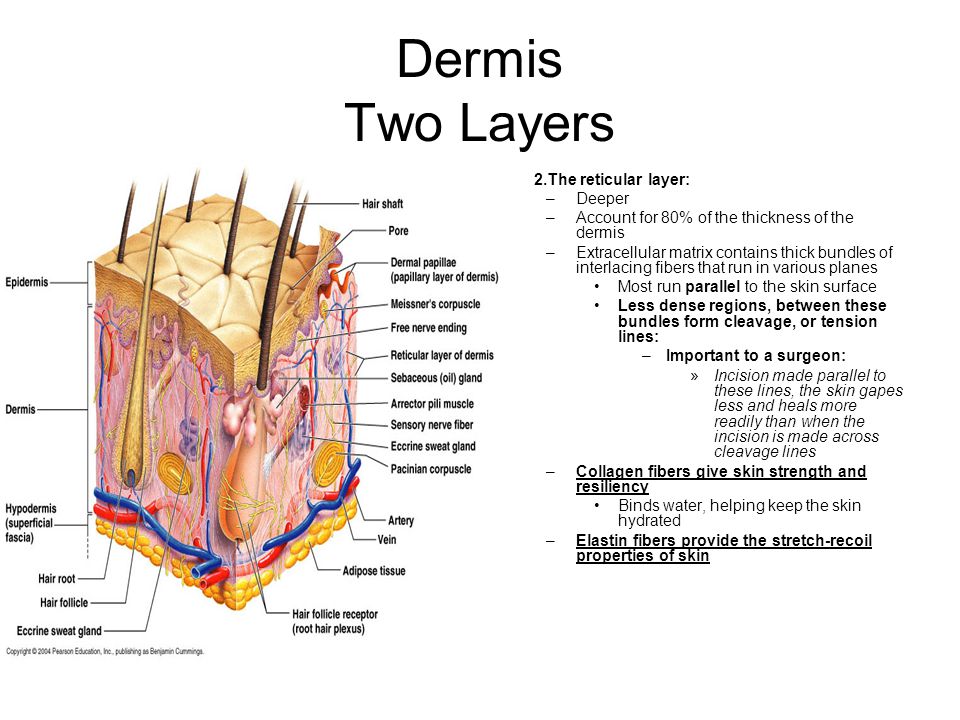 Helpful stress-reducing methods include yoga, pilates, meditation, hypnosis and psychotherapy.
Helpful stress-reducing methods include yoga, pilates, meditation, hypnosis and psychotherapy.
Can complex regional pain syndrome (CRPS) spread from its original body site to a distant site?
Yes it can. For example, complex regional pain syndrome (CRPS) can spread from a primary site, such as a hand, to a distant site, such as the leg or foot.
If treated early, spinal cord stimulation may prevent spread to another site. Spinal cord stimulation can be effective for CRPS affecting either the upper or lower extremity. In some cases, it can be used to treat CRPS affecting both upper and lower extremities at the same time. Spinal cord stimulation is reserved for patients whose condition has not responded to medications and/or other therapies.
Does complex regional pain syndrome (CRPS) affect organ function?
Possibly. For example, there are several cases in the medical literature of patients with longstanding lower limb CRPS who have problems with the function of their bladder and bowel and also have abdominal pain.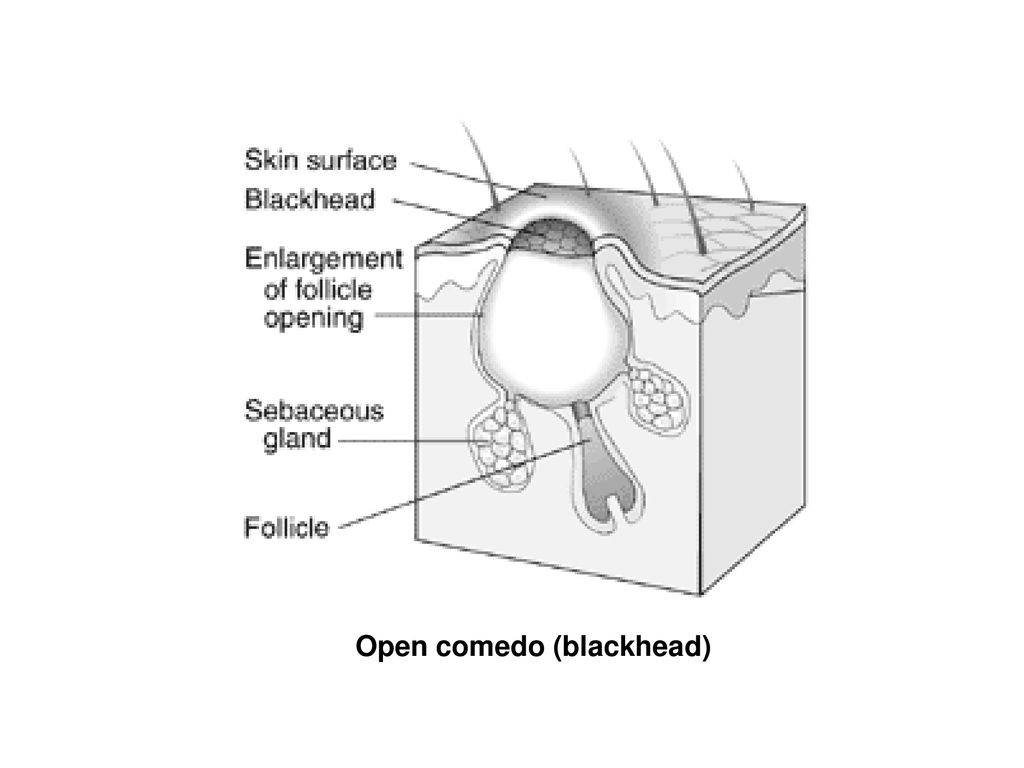 Even though it may start at one site like the foot, CRPS is a chronic condition that involves the entire nervous system. It often causes the autonomic nervous system (the nervous system that looks after internal organs) to react and not function properly like they should.
Even though it may start at one site like the foot, CRPS is a chronic condition that involves the entire nervous system. It often causes the autonomic nervous system (the nervous system that looks after internal organs) to react and not function properly like they should.
What is full body complex regional pain syndrome (CRPS)?
Full-body complex regional pain syndrome (CRPS) may be the result of more than one disease. If CRPS starts in one limb, for example, and then spreads to involve another limb or even all four limbs, this will impact all of the trunk muscles. While this is not necessarily CRPS, the muscle pain may produce what people call “full body” CRPS. Treatment of this involves gradually sorting out muscle groups individually until all of the muscle pain is under control. This requires months of treatment and requires physical therapy, occupational therapy and behavioral medicine all working together.
What is the difference, if any, between fibromyalgia and complex regional pain syndrome (CRPS)?
Fibromyalgia and complex regional pain syndrome (CRPS) are considered different syndromes. They don’t have the same symptoms and there is no evidence they are caused by similar changes in body chemistry or function.
They don’t have the same symptoms and there is no evidence they are caused by similar changes in body chemistry or function.
Resources
Some helpful resources for complex regional pain syndrome (CRPS) include:
Symptoms, Causes, Treatment & Prevention
Overview
What is postherpetic neuralgia (PHN)?
Postherpetic neuralgia (PHN) is a complication of shingles infection (also called herpes zoster). Shingles is caused by the reactivation of the varicella-zoster virus, which is the same virus that causes chickenpox.
Shingles causes a painful, blistering rash and other symptoms. The rash most commonly occurs in a band pattern on one side of your body, usually on your trunk (central core of your body). The rash turns into blisters. As the rash/blisters go away, pain may remain. When pain remains, the condition is called postherpetic neuralgia.
What does postherpetic neuralgia (PHN) feel like?
You will feel pain in the area where the shingles rash developed. The pain can be constant or “come and go.” Some people describe the pain as burning, jabbing or aching. Others (less common) say the affected area feels numb or itchy.
The pain can be constant or “come and go.” Some people describe the pain as burning, jabbing or aching. Others (less common) say the affected area feels numb or itchy.
How long does postherpetic neuralgia (PHN) last?
Postherpetic neuralgia (PHN) can last for weeks, months, or in some people, years after the shingles rash goes away. In most people, shingles pain goes away in one to three months. However, in one in five people, pain lasts more than one year.
The pain from PHN can be so severe in some people that it disrupts their life. Researchers don’t know why some people have severe or long-lasting pain and others do not.
How common is postherpetic neuralgia (PHN)?
Varicella-zoster virus causes both chickenpox and shingles. About 99% of Americans over age 40 have had chickenpox. About one in three people in the U.S. develop shingles in their lifetime. Some 10 to 18% of people who get shingles will develop postherpetic neuralgia. Postherpetic neuralgia is the most common complication of shingles.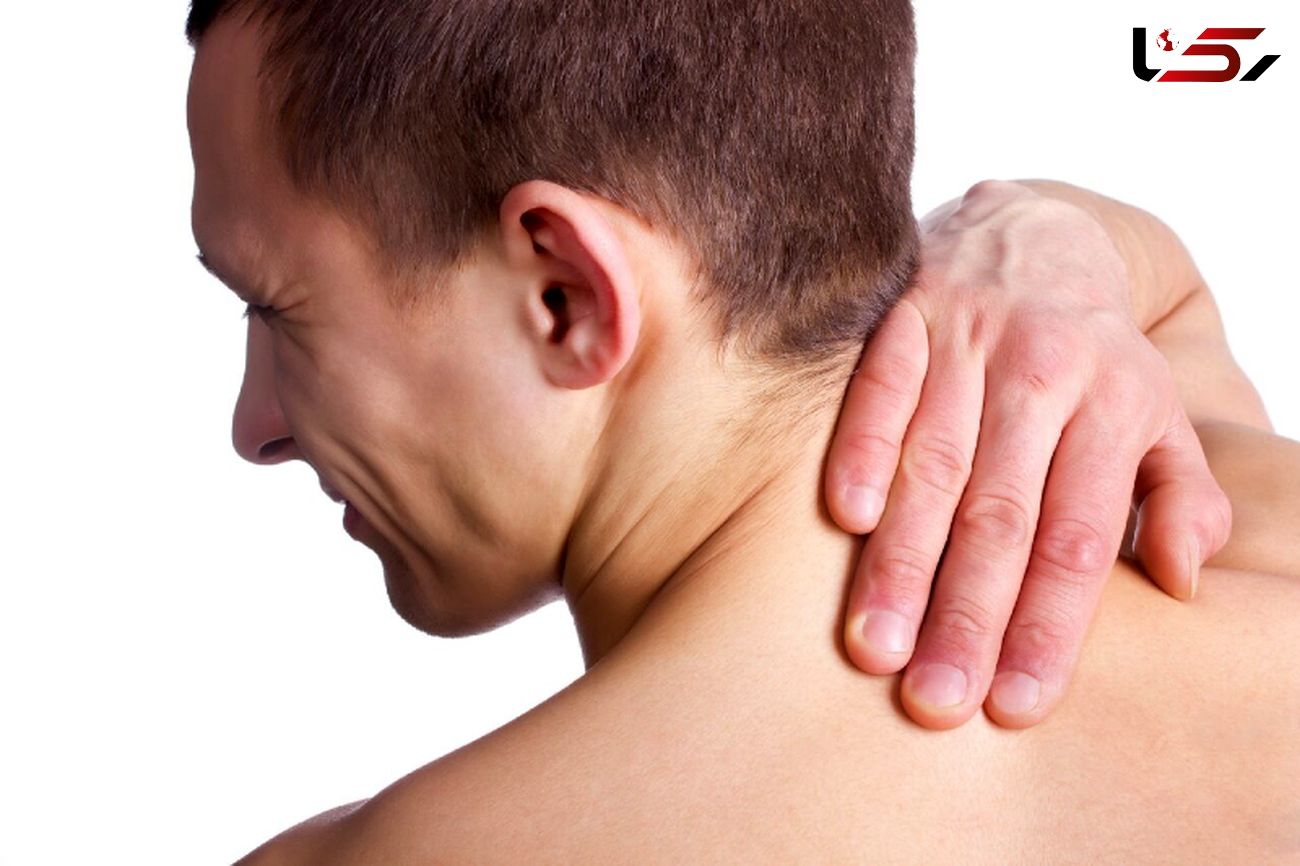
Who is at risk of getting postherpetic neuralgia (PHN)?
Factors that increase the risk of developing postherpetic neuralgia (PHN) include:
- Older age: The chance of developing postherpetic neuralgia increases with age. If you’re older and develop shingles, you’re more likely to develop PHN and have longer lasting and more severe pain than a younger person with shingles. About 10 to 13% of people over age 50 who have had shingles will get PHN. People under age 40 rarely get PHN.
- Weakened immune system: Your immune system weakens as you get older, which allows the inactive varicella-zoster virus to become active again and cause shingles in some people. Medical conditions that can weaken your immune system include cancer, chronic infectious diseases (like HIV/AIDS), being an organ transplant recipient or taking medications that weaken your immune system (such as chemotherapy, immunosuppressant medicines, steroids or anti-organ rejection medicines).

- Severity of your shingles: If you have a severe rash, you have a greater chance of PHN.
- Painful, itchy or tingly feeling before shingles rash: If you had these symptoms in an area of skin a few days before your shingles rash broke out, you are at higher risk of PHN.
- Waiting to see your healthcare provider after shingles rash: If you wait longer than three days after your rash appeared — missing the window to receive antiviral drugs — you have an increased chance of PHN.
Symptoms and Causes
What causes postherpetic neuralgia (PHN)?
Postherpetic neuralgia (PHN) results from damage to nerve fibers during shingles infection. The nerve fibers at the skin in the affected area send exaggerated pain signals to your brain. Postherpetic neuralgia means nerve pain after herpes. Shingles is also called herpes zoster.
Shingles is caused by the varicella-zoster virus, the virus that causes chickenpox.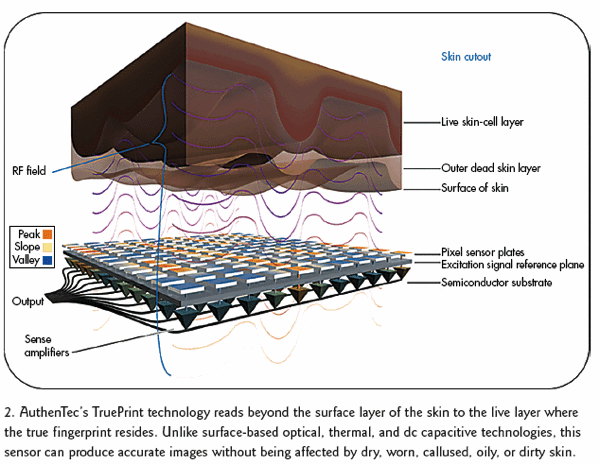 Once you’ve had chickenpox, the virus remains in your body for your entire life, but is dormant or “silent” for years. When the virus becomes reactivated, it causes shingles. A certain percentage of people (< 20%) who get shingles develop PHN.
Once you’ve had chickenpox, the virus remains in your body for your entire life, but is dormant or “silent” for years. When the virus becomes reactivated, it causes shingles. A certain percentage of people (< 20%) who get shingles develop PHN.
What are the symptoms of postherpetic neuralgia (PHN)?
Common postherpetic neuralgia symptoms include:
- Burning, sharp, jagging or aching pain in the area where the shingles rash appeared.
- Itchiness or numbness at or near the area of the former rash.
- Pain that is constant or “comes and goes.” Pain typically lasts, on average, for three months after the rash has healed, but can last for more than a year or longer.
- Pain at affected skin area can be brought on even with a light touch (even clothing brushing against skin).
- Pain gets worse at night or in heat or cold temperatures.
Diagnosis and Tests
How is postherpetic neuralgia diagnosed (PHN)?
Postherpetic neuralgia (PHN) is usually diagnosed based on your symptoms, history of having shingles and physical exam.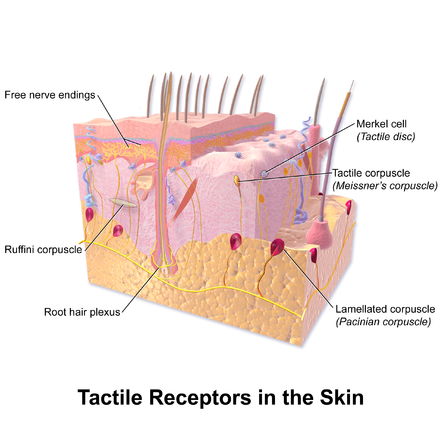 If you’ve had a recent case of shingles and have pain in the area where the shingles rash once was, you likely have PHN. Your provider may want to make sure your pain is not caused by something else, but in most cases, no other tests are needed.
If you’ve had a recent case of shingles and have pain in the area where the shingles rash once was, you likely have PHN. Your provider may want to make sure your pain is not caused by something else, but in most cases, no other tests are needed.
What are the complications of postherpetic neuralgia?
Postherpetic neuralgia can cause:
- Tiredness.
- Trouble sleeping (insomnia).
- Decreased appetite.
- Poor concentration.
Pain from long-lasting PHN can lead to depression.
Management and Treatment
How is postherpetic neuralgia (PHN) treated?
If shingles is caught within the first three days of its outbreak, your healthcare provider may prescribe the antiviral medication acyclovir (Zovirax®), valacyclovir (Valtrex®) or famciclovir (Famvir®). These medications help the rash/blisters heal faster, keep new sores from forming, decrease pain and itching and reduce length of pain after sores have healed.
If your shingles outbreak is not caught early, your healthcare providers has many options to manage your postherpetic neuralgia (PHN) symptoms.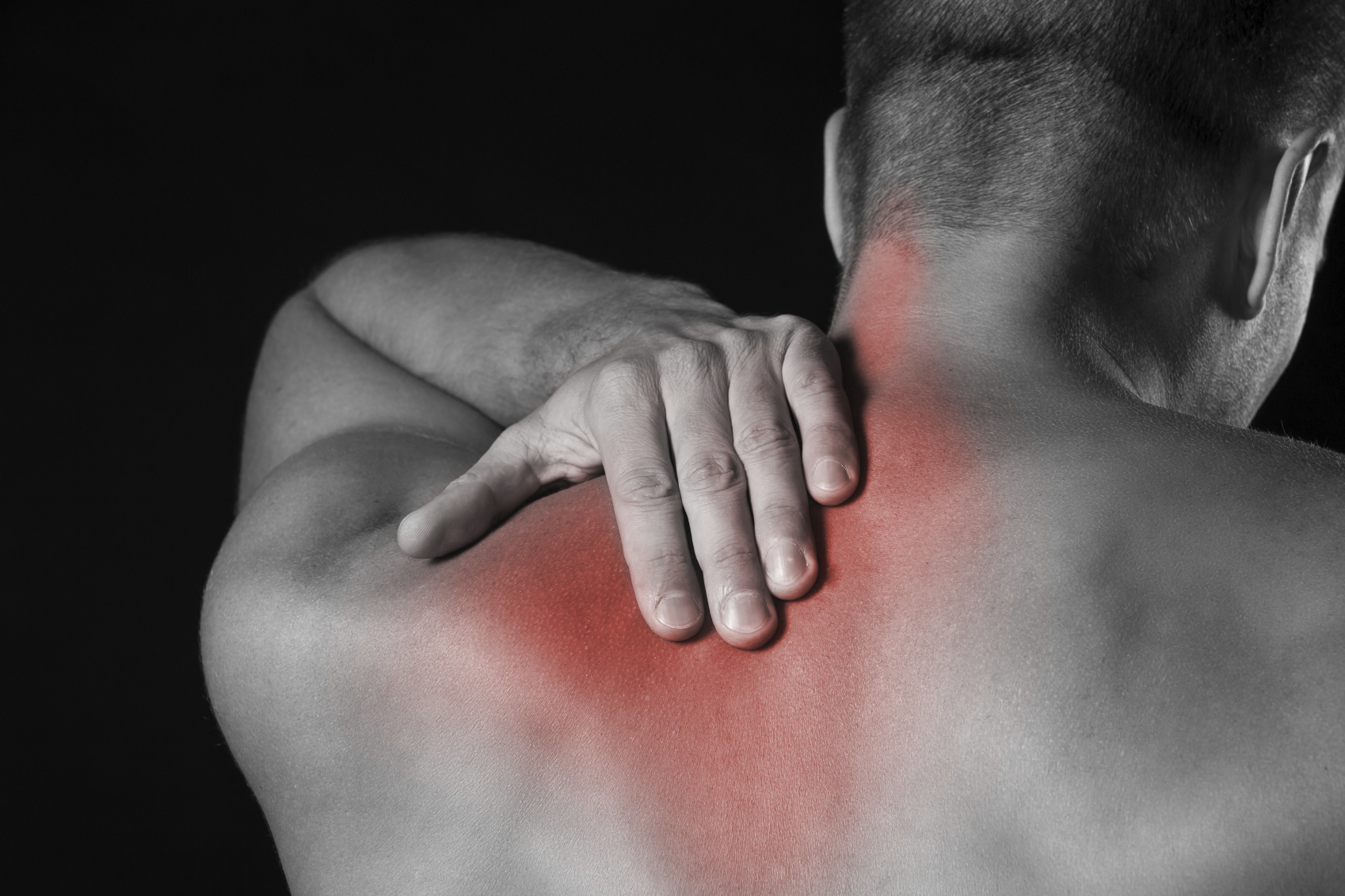
If your pain is mild, your healthcare provider may recommend:
- Acetaminophen (Tylenol®) or NSAIDs such as ibuprofen (Advil®, Motrin®).
- Creams and patches include lidocaine (Lidoderm®) and capsaicin (Zostrix®).
If your pain is more severe, your healthcare may prescribe:
- Antiseizure drugs gabapentin (Neurontin®, Gralise®) and pregabalin (Lyrica®).
- Antidepressants, such as escitalopram (Lexapro®), quetiapine (Seroquel®) or amitriptyline.
- Botulinum toxin (Botox®) injections in the area where you are having pain.
There’s no clear-cut superior treatment for PHN. Your provider may need to try more than one medication or prescribe the use of several medications at the same time. You and your provider will discuss options and what makes sense to try for you. Contact your provider if your pain is not lessening after taking your medicine. Take all your medications exactly as prescribed.
Can postherpetic neuralgia (PHN) be cured?
Although there is no cure for PHN, it can be treated.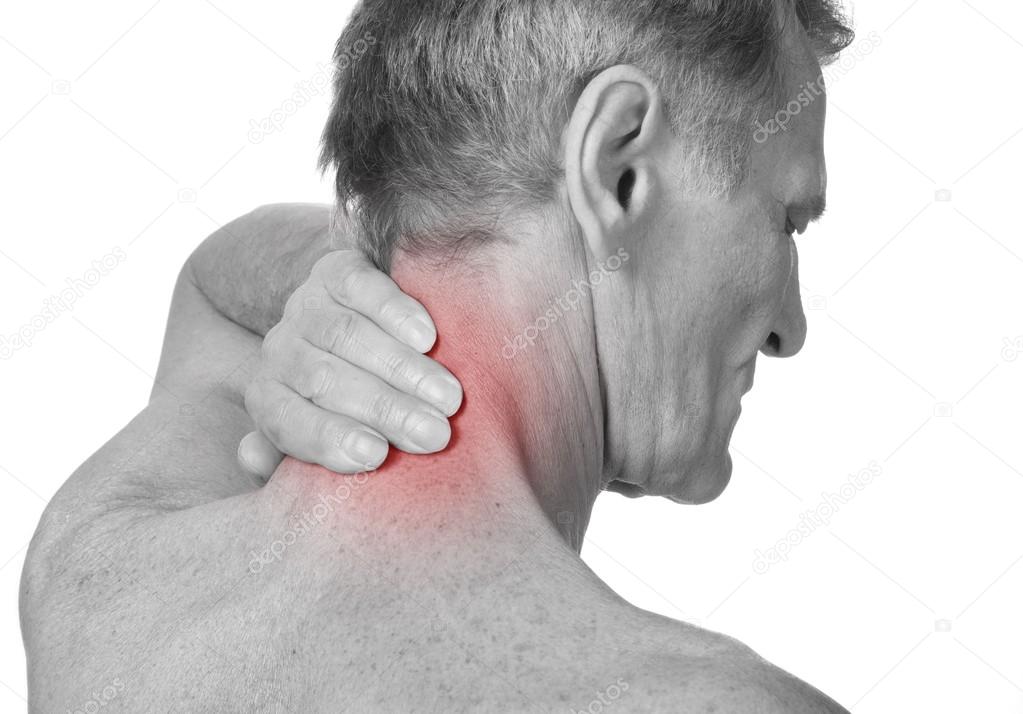 For most people with PHN, pain improves with time and eventually goes away. For most people, the pain goes away in one to three months.
For most people with PHN, pain improves with time and eventually goes away. For most people, the pain goes away in one to three months.
Prevention
Can postherpetic neuralgia be prevented?
The Food and Drug Administration has approved a shingles vaccine, which can reduce your chance of getting shingles and PHN. The recombinant herpes-zoster vaccine (Shingrix®) is recommended to prevent shingles in adults ages 50 and older. The vaccination is given in two doses, two to six months apart. The two-dose vaccine is 90% effective at preventing shingles and PHN. Protection lasts at least for four years after you get vaccinated.
If you have never had chickenpox or have children who have never had chickenpox, getting the chickenpox vaccine (Varivax) can help prevent getting this infection in the first place. If you never get chickenpox, you will not have the varicella-zoster virus in your body and will not get shingles or PHN.
Who should get the Shingrix vaccine?
The Shringrix vaccine is recommended in healthy adults age 50 and older.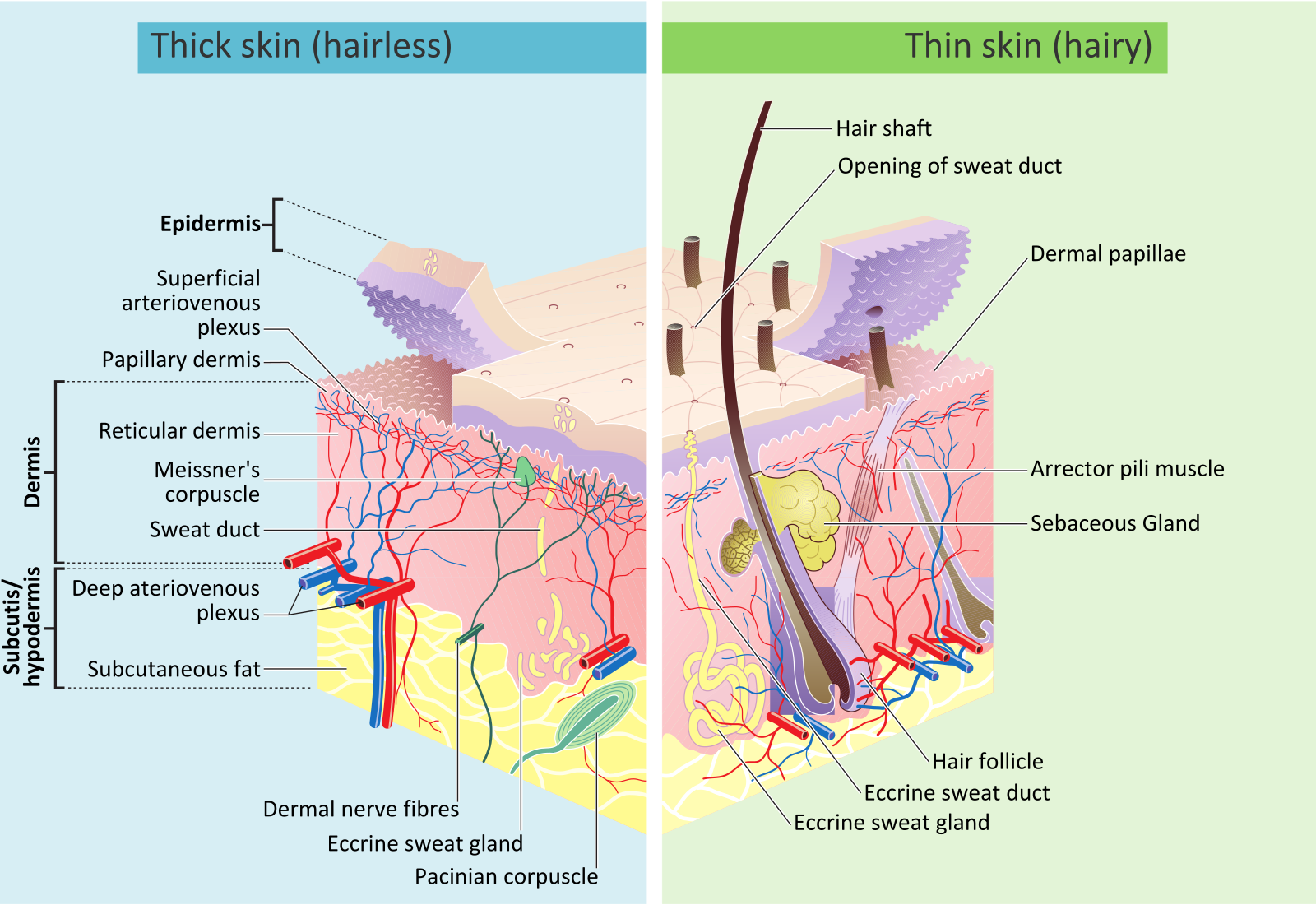 There is no maximum age. You should get the vaccine even if:
There is no maximum age. You should get the vaccine even if:
- You’ve had shingles.
- You’re not sure if you’d had chickenpox (about 99% of Americans over age 40 have had chickenpox, even if they don’t remember getting the disease as a child).
- You’ve already had the Zostavax vaccine. This vaccine for shingles is no longer available in the U.S. Ask your healthcare provider about the best time to get the Shingrix vaccine.
If you currently have shingles, you need to wait until the shingles rash has gone away. Talk with your provider about the proper time to begin vaccination with Shingrix.
Outlook / Prognosis
What outcome can I expect if I have postherpetic pain (PHN)?
There’s no standard treatment for the symptoms of postherpetic pain (PHN). Depending on the severity of your pain, you may start with over-the-counter products. If your pain is more severe, one or more prescription medications may be tried. PHN is difficult to treat. Achieving a complete symptom-free state was achieved in less than half the patients with PHN, according to one study.
Achieving a complete symptom-free state was achieved in less than half the patients with PHN, according to one study.
PHN tends to happen in older individuals who may have other health conditions, which can complicate treatment and results. Pain can last weeks, months and even longer than a year. In some people, the pain can be debilitating. In most people, PHN lessens with time.
A note from Cleveland Clinic
The best way to not get postherpetic neuralgia (PHN) is to prevent it from happening in the first place. Varicella-zoster virus causes both chickenpox and shingles. Vaccines are available to protect against developing both of these viral infections.
Once you develop chickenpox, the varicella-zoster virus remains in your body for life. If the virus reactivates and causes shingles, you have a few days around the rash outbreak to see your provider and get an antiviral medication, which can significantly lessen your symptoms. Still, if you develop PHN, your provider has many medications available to manage your symptoms.
Fibromyalgia Pain
Whether you are experiencing painful tender points, deep muscle pain, chronic headaches, unending back pain, or neck pain, you know how fibromyalgia feels. People with fibromyalgia experience pain in ways no one else can really understand.
But what is pain? What causes it? Is fibromyalgia pain acute (short term) or chronic (long term)? And what impact does fibromyalgia pain have on every part of your life?
What Is Pain?
Pain is an uncomfortable feeling in your body that warns you something is wrong. While this feeling is the body’s way of alerting your brain that there is a problem, after it goes on for weeks or even months, pain becomes a part of your very existence. At that point, not only is pain a symptom that something is wrong, but pain becomes the disease itself.
What Is Fibromyalgia-Related Pain?
Fibromyalgia-related pain is pain that causes you to ache all over. You may have painful “tender points,” places on your body that hurt no matter what medication you take. Your muscles may feel like they have been overworked or pulled even though you haven’t exercised. Sometimes, your muscles will twitch. Other times they will burn or ache with deep stabbing pain. Some patients with fibromyalgia have pain and achiness around the joints in their neck, shoulders, back, and hips. This kind of pain makes it difficult to sleep or exercise.
How Does the Brain Perceive Pain?
There are over 20 different kinds of nerve endings in your skin that tell you if among other sensations something is hot, cold, or painful. These nerve endings convert mechanical, thermal, or chemical energy into electrical signals that convey information to the brain and spinal cord — also known as the central nervous system or CNS. These signals travel to areas of your CNS where you perceive the stimuli as the sensations you actually feel — sensations such as searing, burning, pounding, or throbbing.
Research suggests that the pain associated with fibromyalgia is caused by a “glitch” in the way the body processes pain. This glitch results in a hypersensitivity to stimuli that normally are not painful. According to the National Institute of Arthritis and Musculoskeletal and Skin Diseases (NIAMS), research has shown that people with fibromyalgia have reduced blood flow to parts of the brain that normally help the body deal with pain.
Is Fibromyalgia Pain Acute or Chronic?
Acute pain comes on suddenly and can be severe. For instance, think about how suddenly your back can ache after you’ve bent down to lift a heavy package or a child. Yet, in more than 80% of cases, acute pain goes away in about two weeks. It runs its course and disappears as the problem is relieved. If your pain from a strained muscle lasts only a few days or weeks, it is considered acute.
Chronic pain is pain that lasts much longer than someone would normally expect based on the original problem or injury. When pain becomes chronic, our bodies react in several ways. Chronic pain may be associated with abnormalities in brain chemicals, low energy, mood disorders, muscle pain, and impaired mental and physical performance. As neurochemical changes in your body increase your sensitivity to pain, the chronic pain worsens. You begin to have pain in other parts of the body that do not normally hurt.
What Are Fibromyalgia’s Tender Points?
Tender points are localized areas of tenderness typically above muscles, tendons or bones– that hurt when pressed. Tender points are not areas of deep pain. Instead, they are superficial areas seemingly under the surface of the skin, such as over the elbow or shoulder. People with fibromyalgia often have 11 or more out of a possible 18 tender points.
How Does the Chronic Pain of Fibromyalgia Impact Lives?
Fibromyalgia’s chronic pain seems unending. The ongoing headaches, neck pain, aching joints, and painful tender points prevent sleep, causing you to awaken frequently at night. The chronic sleep disorder of fibromyalgia results in increased achiness, morning stiffness, and daytime fatigue. While you want to exercise and be active, you may suffer with foot pain, hip pain, knee pain, or other painful joints. All of these make it next to impossible to exercise with friends or to play with your kids or grandkids.
The constant pain causes more irritation and difficulty dealing with others, including family members, friends, and people at work. For women with fibromyalgia who must take care of family members and work full-time, coping with pain is a challenge. If there is undiagnosed pain and no effective treatment or medication for the fibromyalgia, the overwhelming feelings can lead to irritability, exhaustion, anxiety, social isolation, and depression.
How Can I Get Relief for Undiagnosed Fibromyalgia Pain?
Talk to your doctor about your symptoms of fibromyalgia, including the body aches, aching joints, painful tender points, and fatigue. With a multifaceted program of effective drugs, alternative therapies, psychotherapy, and mind/body remedies, you should be able to find good relief of symptoms and reclaim your active life again.
Dysesthesia Pain from MS: Symptoms, Causes, and Treatment
Pain can be a serious issue when you have multiple sclerosis (MS). For many people, the pain is long-lasting and hard to treat.
If it’s bad enough, it can keep you from your normal activities and even lead to depression. Several types of pain are associated with MS. One of the most common is called dysesthesia.
What Does the Pain Feel Like?
Dysesthesia means “abnormal sensation.” It’s usually a painful burning, prickling, or aching feeling. You typically get it in your legs or feet. But you also can have it in your arms. Sometimes the pain feels like you’re being squeezed around your chest or abdomen. Some people call that the “MS hug.”
The pain may be acute, meaning it comes on quickly then goes away. Or it may be chronic, lingering for a long time. Sometimes the pain comes out of nowhere, and other times a normal sensation changes. For instance, your clothes suddenly feel like they’re burning your skin.
Changes in temperature may make the pain worse, and you may feel it more after you exercise or when you’re trying to sleep.
What Causes It?
Dysesthesia is what’s called neuropathic or neurogenic pain. That means it comes from your nervous system. Although you feel the pain in your feet or skin, that isn’t where the problem is.
Multiple sclerosis breaks down the covering that protects your nerves. That interrupts the messages between your brain and the rest of your body. Your brain can’t read the nerve signals correctly, so it tells you that you feel something you really don’t.
Whether you have pain doesn’t seem to be related to what kind of MS you have, how serious it is, or how long you’ve had it. Sometimes dysesthesia is one of the first signs of MS.
How Is It Treated?
Doctors usually prescribe one of two kinds of drugs that work on your central nervous system:
- Antidepressants like amitriptyline (Elavil) and duloxetine (Cymbalta) can change how your body responds to pain.
- Anticonvulsants like gabapentin (Neurontin) or pregabalin (Lyrica) work to calm overstimulated nerves.
A pain-relief cream that has lidocaine or capsaicin may soothe tingling and burning. In very rare cases, the narcotic pain medicine tramadol may be used for a short while if you have severe, burning pain.
Some pain management strategies for dysesthesia don’t involve medicine. You may be able to change pain to a different feeling with warm or cold compresses or compression socks or gloves. Alternative therapies can also be part of an overall treatment plan for chronic pain. These include:
- Acupressure
- Acupuncture
- Biofeedback in which electrical sensors give you information about your body and help you make small changes to ease pain. For example, you might relax certain muscles or slow your breathing.
- Exercise
- Hypnosis
- Meditation
- Stress management
If you have MS along with this kind of pain, talk to your doctor about it and see if they can recommend something to bring you relief.
Meralgia Paresthetica | Johns Hopkins Medicine
Meralgia paresthetica is caused by the compression of one of the large sensory nerves in the leg — the lateral femoral cutaneous nerve. This nerve provides sensation to the skin along the outer thigh starting from the inguinal ligament and extending down toward the knee. Compression of this nerve can result in numbness, tingling, pain or a burning sensation felt in the outer thigh.
Meralgia Paresthetica: What You Need to Know
The condition is also called Bernhardt-Roth syndrome.
Proper diagnosis of the underlying cause of the nerve compression is essential for effective treatment.
Treatment may include physical therapy, weight loss, nerve block, injections or surgery.
Meralgia Paresthetica Symptoms
The lateral femoral cutaneous nerve branches off the lumbar plexus, a network of nerves that connects the spinal cord in the lower back with the motor and sensory nerves of the legs and lower body. It provides sensation to the front and sides of the thigh. This is a pure sensory nerve and does not operate any muscles.
Symptoms of meralgia paresthetica may include:
Meralgia Paresthetica Diagnosis
Diagnosis is necessary to determine the cause of meralgia paresthetica so the doctor can recommend the appropriate treatment plan, including surgery if it is deemed necessary.
Diagnostic steps may include:
What causes meralgia paresthetica?
Meralgia paresthetica is caused by irritation of the nerve, most commonly from entrapment. The lateral femoral cutaneous nerve, which runs through the pelvis, groin and into the thighs, can become compressed due to swelling, trauma or pressure in the surrounding areas.
Common causes of meralgia paresthetica may include:
Repetitive motion of the legs
Recent injuries to the hip
Wearing tight clothing or heavy belts
Weight gain
Meralgia Paresthetica Treatment
Depending on the underlying cause of pressure on the nerve, the doctor may recommend one or more of the following therapies:
Physical therapy to strengthen the muscles of the legs and buttocks, and reduce injury to the hips
Wearing less restrictive clothing
Weight loss management
Corticosteroid injection to reduce swelling
In some cases, surgery may be necessary to relieve the compression surrounding the nerve.
Skin Cancer (Non-Melanoma): Symptoms and Signs
ON THIS PAGE: You will find out more about body changes and other things that can signal a problem that may need medical care. Use the menu to see other pages.
People with a basal cell carcinoma, squamous cell carcinoma, or Merkel cell cancer may experience the following symptoms. Sometimes, people with non-melanoma skin cancer do not have any of these changes. Or, the cause of a symptom may be a different medical condition that is not cancer.
Changes in the skin are the main warning sign for skin cancer. Each type of skin cancer can appear differently, so it is important to talk with your doctor when you notice a change in your skin. The skin features that frequently develop are listed below.
For basal cell carcinoma, 2 or more of the following features may be present:
An open sore that bleeds, oozes, or crusts and remains open for several weeks
A reddish, raised patch or irritated area that may crust or itch, but rarely hurts
A shiny pink, red, pearly white, or translucent bump
A pink growth with an elevated border and crusted central indentation
A scar-like, white, yellow, or waxy area, often with a poorly defined border
See pictures of these features of basal cell carcinoma. (Please note that this link will take you to a separate website.)
Squamous cell carcinoma can often crust, bleed, and appear as:
A wart-like growth
A persistent, scaly red patch with irregular borders that may bleed easily
An open sore that persists for weeks
A raised growth with a rough surface and a central depression
See pictures of these signs of squamous cell carcinoma. (Please note that this link will take you to a separate website.)
Merkel cell cancer often occurs as:
Painless, firm, shiny lumps on the skin
These lumps can be red, pink, or blue
Some types of skin cancer spread along the nerves. If this happens, it can cause itching, pain, numbness, tingling, or a feeling like there are ants crawling under the skin. Other signs may include a lump or bump under the skin in areas such as the neck, armpit, or groin.
If you are concerned about any changes you experience, please talk with your doctor. Your doctor will ask how long and how often you’ve been experiencing the symptom(s), in addition to other questions. This may include when you first noticed the skin feature, how long it has been there, and any other symptoms you may be experiencing. This is to help figure out the cause of the problem, called a diagnosis.
For most cases of skin cancer, removing the cancer with surgery or using a topical treatment will cure the disease. In more complicated cases, a multidisciplinary team of doctors will meet with a patient to discuss different types of treatments to develop a plan with the best chances of curing or controlling this disease (see Types of Treatment).
Particularly with advanced skin cancer, relieving symptoms will be an important part of cancer care and treatment. This may be called palliative care or supportive care. Once started, it is continued throughout treatment. Be sure to talk with your health care team about the symptoms you experience, including any new symptoms or a change in symptoms.
The next section in this guide is Diagnosis. It explains what tests may be needed to learn more about the cause of the symptoms. Use the menu to choose a different section to read in this guide.
Pain Receptor – an overview
Pain Receptors in Muscles, Joints, and Viscera
In addition to cutaneous pain receptors, pain receptors in muscles, joints, blood vessels, and viscera have also been identified (Table 18.2). Muscle pain is mediated by receptors of both group III (thinly myelinated; Aδ fibers) and group IV (nonmyelinated; C fibers) afferent fibers. Excessive stretch or contraction after strenuous exertion may activate the muscle pain receptors of group III fibers. Receptors of group IV fibers may be activated in response to the release of algesic compounds after muscle injury or ischemia. Joint pain, including arthritis, may be caused by inflammation. This pain is mediated by receptors associated with group III and group IV fibers. Visceral pain is often described as being diffuse and difficult to localize and is frequently referred to an overlying somatic body location. In addition, visceral pain usually involves autonomic reflexes. Visceral pain receptors located in the heart, respiratory structures, gastrointestinal tract, and urogenital tract are poorly identified (Table 18.2). These receptors can be activated by intense mechanical stimuli, including overdistention or traction; ischemia; and endogenous compounds, including bradykinin, prostaglandins, hydrogen ions, and potassium ions. Activation of these receptors produces pain.
Of the two primary afferent fiber types carrying nociceptive sensations, Aδ fibers have a slightly faster conduction velocity (5 to 30 m/s) than that of C fibers. They carry well-localized acute sensations that do not evoke an affective component to the sensory experience. A pinprick, used clinically to test ALS function, is one stimulus that activates Aδ fibers. On the other hand, C fibers are smaller and conduct more slowly (0.5 to 2 m/s). They transmit poorly localized diffuse sensations that produce a noticeable affective response. For example, the dull, persistent ache that follows a muscle pull results from activation of C fibers. Both Aδ and C fibers are considerably smaller and conduct more slowly than fibers of the PCMLS. A nerve block or anoxia preferentially affects large-diameter, heavily myelinated fibers and thus usually results in loss of discriminative tactile, vibratory, and postural sensations to varying degrees. Local anesthetics, such as lidocaine and bupivacaine, preferentially affect small-diameter Aδ and C fibers by blocking sodium channels and thus result in loss of nociception (analgesia).
Cell bodies of C and Aδ fibers are generally small compared with other pseudounipolar neurons in the posterior root ganglion. The central processes of these cells enter the spinal cord via the lateral division of the posterior root (see Fig. 17.5). Many smaller fibers contain excitatory amino acids such as glutamate as well as peptides such as substance P and calcitonin gene–related peptide that may serve as neurotransmitters. The central processes of these fibers also contain surface membrane receptors. They include a γ-aminobutyric acid (GABA) receptor, a serotonin (5-hydroxytryptamine) receptor, and a mu opioid receptor. Pharmacologic therapies as well as descending fibers (see Figs. 18.21 and 18.22) can act at these presynaptic sites before the activation of second-order neurons and suppress the initiation of the pain signal or block transmitter release from primary afferent terminals. In addition to their normal trajectory into the posterior horn, a small number of C fibers enter the spinal cord through the anterior root of a spinal nerve. It is possible that these fibers provide a basis for the return of pain after posterior rhizotomy, a procedure in which posterior roots are sectioned in an attempt to alleviate intractable pain.
The strip of skin that is innervated by the peripheral cutaneous branches of a given spinal nerve is called a dermatome (Figs. 18.4 and 18.5). The central processes of these nerves that convey cutaneous input terminate in the posterior horn. It is clinically useful to examine dermatomes that have relationships to landmarks on the body: for example, C7 for the index finger, the T4 to T5 border at the nipples, T10 at the navel, L1 along the pelvic rim, L5 for the big toe, and S4 and S5 for the genitalia and anus (Fig. 18.5). There is overlap between the peripheral and central distribution of adjacent spinal nerves and consequently between their dermatomes (Fig. 18.4). This overlap reduces the effects of injury to a single spinal root.
Shingles (herpes zoster) is a disease of viral etiology that is noteworthy for its dermatomal distribution (Fig. 18.6). Subsequent to a bout of chickenpox, viral DNA may infect and become latent in trigeminal and posterior root ganglion cells. The virus may reactivate periodically, for instance, under conditions of extreme stress, producing infectious virions that travel down the peripheral processes of the neurons to produce a painful skin irritation in the dermatomal distribution of the ganglion (Fig. 18.6). When an injury or disease process affects a series of nerve roots, the result is diminished sensibility (hypesthesia) over the dermatomes served by those roots. The borders of the hypesthetic region correspond to dermatomal boundaries. However, the most debilitating aspect of this disease is a poorly understood recurrence of pain. Known as postherpetic neuralgia, this condition falls under the category of neuropathic pain.
Clinically, it is important to test patients for intact ALS and PCMLS function. In testing of the ALS, a single pinpoint applied to the skin should evoke a response (perception of pain) from the patient. ALS modalities are also evaluated by comparing pinprick of one side of the face with the other side or by comparing more distal portions of the extremities (toes and fingers) with more proximal portions (knees and elbows). Patients with diabetes mellitus may experience a sensory loss, including pinprick, that starts distally and proceeds proximally; this is a stocking-glove sensory loss because it initially affects the feet and hands first. Function of the intact PCMLS is tested by the simultaneous application of two points spaced at measured intervals. As the points are moved closer, the ability to identify them as separate stimuli (two-point discrimination) decreases and eventually disappears. The PCMLS is also tested by applying a 128-Hz tuning fork (vibratory sense) to a bone prominence or the tip of a finger or toe. The patient perceives this as a buzzing sensation. It is common to test both pain/thermal sense and discriminative touch/vibratory sense on both sides of the face and body to see if there are asymmetries.
90,000 SKIN PAIN is … What is SKIN PAIN?
Acute pain – superficial pain, skin pain (especially often perceived by an individual as a sharp, stabbing, short-term) … Encyclopedic Dictionary of Psychology and Pedagogy
Pain – This term has other meanings, see Pain (disambiguation). Pain ICD 10 R52.52. ICD 9 338338 Dise … Wikipedia
Cutaneous anthrax – Anthrax (synonyms: malignant carbuncle; anthrax eng.; mihbrand German; charbon, anthrax carbon French) acute infectious disease from the group of zoonoses, characterized by fever, lymphatic system damage, intoxication … Newsmaker Encyclopedia
Skin sensitivity – Sensory effect resulting from stimulation of the skin with stimuli such as touch, temperature and pain … Psychology of sensations: glossary
SURFACE PAIN – See skin pain … Explanatory Dictionary of Psychology
Discomfort – Pain physical or mental suffering, excruciating or unpleasant sensation, anguish, frustration, the opposite of euphoria.Contents 1 Pain from the point of view of medicine 2 International definition … Wikipedia
Phantom pain – Pain physical or mental suffering, excruciating or unpleasant sensation, anguish, frustration, the opposite of euphoria. Contents 1 Pain from the point of view of medicine 2 International definition … Wikipedia
Larva migrans – Cutaneous larva migrans ICD 10 B76.976.9 ICD 9 126.9126.9 DiseasesDB … Wikipedia
BENIER – BECA – SCHAUMANN SYNDROME – (the skin form of the disease is described by the British surgeon and dermatologist J.Hutchinson, 1828-1913, and later – E. Besnier and the Norwegian dermatologist C. P. M. Boeck, 1845-1917; the defeat of the lymph nodes and lungs was revealed by the Swedish doctor J. Shaumann, … … Encyclopedic Dictionary of Psychology and Pedagogy
Infectious diseases – (late lat. Infectio infection) a group of diseases caused by specific pathogens, characterized by infectiousness, cyclic course and the formation of post-infectious immunity. The term “infectious diseases” was introduced … … Medical Encyclopedia
90,000 Impetigo (superficial pyoderma) – Symptoms, diagnosis and treatment
A highly contagious and common bacterial skin infection that usually occurs in children; the focus is on schools and play groups.
The disease usually has staphylococcal or streptococcal etiology. Diagnosis is clinical; Bacterial cultures of the skin are examined when the disease is common or where there is a risk of spreading the infection.
Skin that has been damaged by minor injuries or other diseases is particularly susceptible to infection.
As a rule, ends spontaneously or with the help of local antiseptics.
Topical antibiotics are effective, but resistance may be a problem in some regions.
Systemic antibiotics may be required; for example, if the infection responds to topical treatment, if there is concern about complications (eg, acute rheumatic fever), or if a deeper infection is suspected.
Impetigo is a superficial skin infection and is usually caused by Staphylococcus aureus and Streptococcus pyogenes. It has two forms: non-bullous and bullous. Bullae are fluid-filled formations> 0.5 cm in diameter.
Non-bullous impetigo is the most common form (70% of cases).[1] Hartman-Adams H, Banvard C, Juckett G. Impetigo: diagnosis and treatment. Am Fam Physician. 2014 Aug 15; 90 (4): 229-35.
https://www.aafp.org/afp/2014/0815/p229.html
http://www.ncbi.nlm.nih.gov/pubmed/25250996?tool=bestpractice.com
Although bulla is not present in this form, vesicles (fluid-filled lesions <0.5 cm in diameter) may appear briefly in the early stages of the disease. The causative agents are Staphylococcus aureus, Streptococcus pyogenes, or a combination of the two.Damage occurs in areas of injured skin.
Bullous impetigo is associated with a skin infection with Staphylococcus aureus. Damage occurs on intact skin.
Transcutaneous electrical nerve stimulation (electroneurostimulation – ESN) for neuropathic pain
Essence
It is not possible to state with certainty that ESP is effective in reducing pain in adults with neuropathic pain when compared to simulated ESP.
Relevance
Neuropathic pain is pain that results from damage or disease to nerves and can be difficult to treat effectively. This pain can occur after direct nerve damage or develop as a result of disorders such as diabetes, shingles, or carpal tunnel syndrome. Electroneurostimulation (ESN) is a common type of treatment for a range of pain conditions. Treatment involves using a small, battery-powered device to deliver low-voltage electrical current through electrodes attached to the skin.This is supposed to relieve pain.
Review question
Does ESP reduce pain intensity and improve quality of life in adults with neuropathic pain?
Research characteristics
We reviewed all eligible clinical trials comparing ESR to artificial ESN (known as “sham” ESN), with or without treatment, or comparing ESN in combination with conventional care with only conventional care in treating neuropathic pain in adults.As of September 2016, we found 15 clinical trials that met the eligibility criteria for inclusion in the review. Of these 15 studies, we were able to combine the results of five studies to examine the effect of ESP versus sham ESP in pain management. These clinical trials included a range of neuropathic pain problems (e.g., in people with spinal cord injury, back pain associated with nerve damage, complications associated with diabetes, etc.)etc.). We found the quality of the evidence to be generally low.
Highlights
We could not state with certainty how effective ESN is in reducing pain, compared to simulated ESN, in people with neuropathic pain. This is due to the very low quality of the evidence, which means that our confidence in this result is very limited and that further research is likely to change it. The lack of data presented means that we were unable to draw any conclusions regarding the impact of ESN treatment on quality of life, the use of pain medications, or people’s opinions on how ESN use changed their condition.
We described the results of the remaining 10 clinical trials in which the treatment of ENS was compared with other types of treatment. These 10 studies were quite different and therefore we were unable to combine and analyze them together. This, combined with the very low quality of evidence from these 10 clinical trials, meant that we were unable to assess pain relief, quality of life, pain medication use, or people’s perceptions of changes in their condition.
In three of these 15 clinical studies, some people using ESP developed skin irritation under the electrode pads.Three studies did not report any problems, and the remaining studies did not provide any details of side effects. Based on this, it is unrealistic to comment on the side effects associated with the use of ESN.
Classification of pain | Doctor Chep’s Neurology and Osteopathy Cabinet
Pain is an unpleasant sensory and emotional sensation associated with real or potential tissue damage and the body’s simultaneous response to protect it from a pathogenic factor.This definition emphasizes both the real physical and emotional subjective nature of pain.
Classification of pain:
I. By pathophysiological mechanism:
1. Nociceptive pain
a) somatic (transmitted by sensory nerves)
– superficial (skin)
– deep (ligaments, muscles, tendons, joints, bones, blood vessels).
b) visceral (transmitted by autonomic nerves)
2. Neuropathic pain
a) peripheral (damage or disease of the roots, peripheral nerves, plexuses or autonomic ganglia)
b) central (as a result of damage to the brain or snippet brain, or the formation of a phantom focus “In the cerebral cortex; for example, thalamic pain, phantom pain, post-stroke pain, pain in multiple sclerosis).
3. Psychogenic pain (diagnosed in the absence of organic disease or when the nature and severity of the pain syndrome cannot be explained, is chronic and occurs against the background of depression, hypochondria, anxiety, phobia).
4.

 Also, pain that travels to the opposite extremity.)
Also, pain that travels to the opposite extremity.) This treatment is usually considered only if you are in severe pain and all other treatment methods have failed to reduce your pain.
This treatment is usually considered only if you are in severe pain and all other treatment methods have failed to reduce your pain.